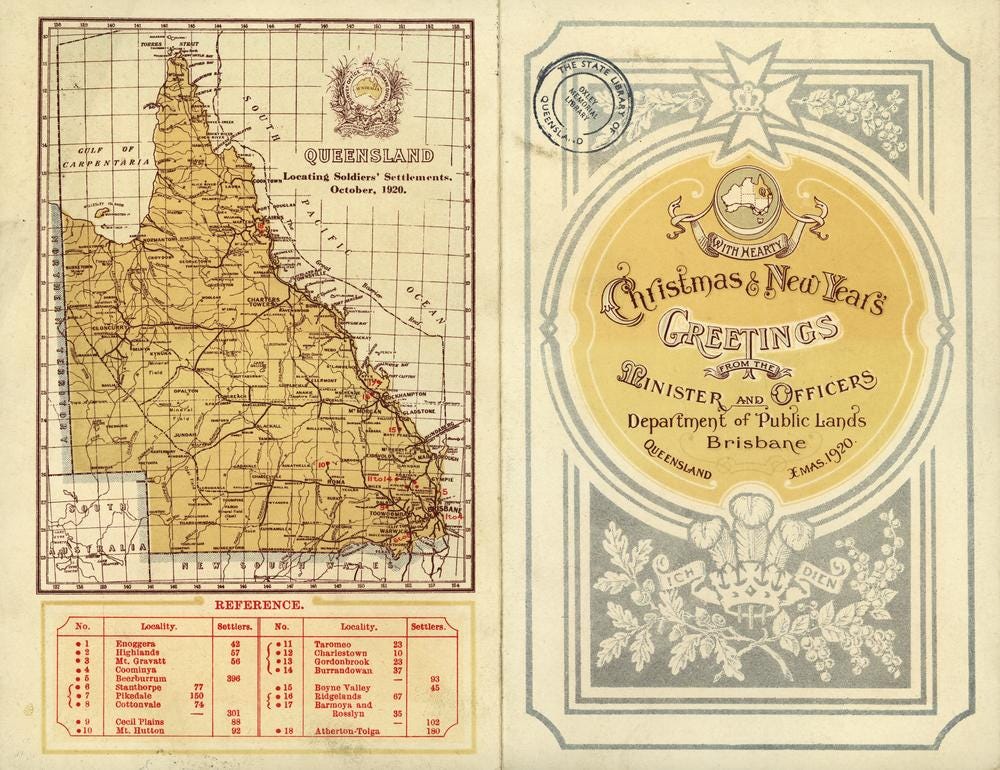Today is ANZAC Day, and so I wanted to tell you the short story of Passchendaele, Fleurbaix, Messines and Bullecourt. But not the ones you’re thinking of. Because all of these are in Queensland…
The tale begins with soldier settlement as early as 1915, and the premise was, that men discharged from the army having served in the war would be allocated land throughout Australia. Some 18 million acres would be taken from crown land, but 6.3 million more were purchased, with an end result of more than 23,000 plots established throughout Australia. All of this was administered at a national level, but when it came to applications, allotments and the business of putting former soldiers on this land, that would fall to individual states. Yes, this was a way of acknowledging the service a man had rendered in the war, but there was more to it than that. In theory, the men who successfully applied would be suitable for populating and working in presently remote areas. Though there was some underhand skulduggery when it came to putting this last point into practice, the scheme was also open to nurses and the female relatives of deceased soldiers who wanted to start over again somewhere new.
There were rules. If successful, the man in question had to reside on the land for a minimum of five years in order to cement the expansion of the population. There were a number of possibilities for making a living depending on where the land was: wool, dairy, cattle, pigs, grain. We have to acknowledge that some of this land was swiped from Australia’s indigenous population, and that when it came to their applications to join these new settlements, only a tiny number were granted anything. Not everyone was successful, either. Australia is massive, and for some men, they might as well have been transplanted to another planet for all they understood the climate of their new home. Others found the remote, hard living too much, or failed to generate enough money to make a go of it, and so some just abandoned their plots and went home. Lessons were learned, and when the scheme continued after the Second World War, better infrastructure to support settled soldiers and their families improved results.
But to return to Queensland in the aftermath of the First World War. By 1924, 23,367 returned soldiers and sailors had taken up settlement farms covering more than 23 million acres across Australia. Queensland accounted for 2,000 of those farms, spanning 705,565 acres, and that included all of those places I listed above. They were all established in the Darling Downs area around the town of Stanthorpe, which is in what’s known as the granite belt. Don’t think outback, red dirt and the dingo ate my baby, this region is high up, lush, famous for its apples, and down near the border with New South Wales…
A 1920 map showing soldier settlements in Queensland (State Library of Queensland/Wikipedia)
Keep reading with a 7-day free trial
Subscribe to Alex Churchill’s HistoryStack to keep reading this post and get 7 days of free access to the full post archives.




